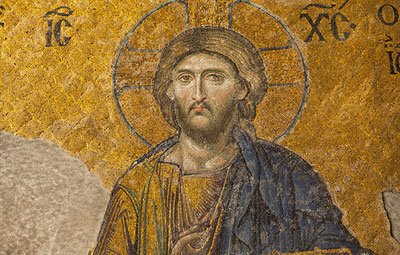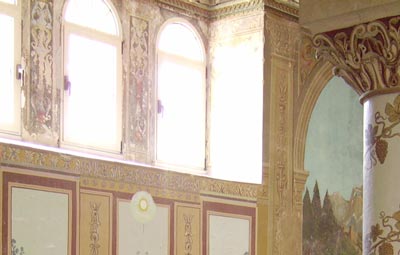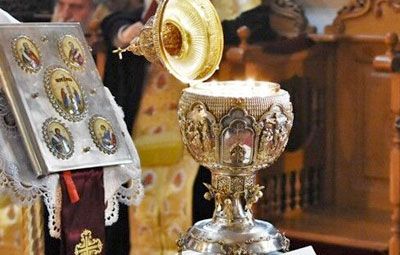Psalmody
As it is widely known, psalmody has been used in worship since the foundation of the Church. Our Lord Jesus Christ and His disciples after the Last Supper, “when they had sung a hymn they went out in the Mount of Olives” (Mark 14:26). Since then, psalmody has been conjoined with the Mystery of Holy Eucharist and with all kinds of Christian prayers. Apostle Paul and Silas while stranded in jail of Philippi “at midnight…they prayed and sang praises unto God” (Acts 16:25); all faithful at their congregations sang praises to God in psalms and hymns and spiritual songs (Ephesians 5:19). After the Apostolic period the church congregation was mainly doing the chanting but there were also chanters, psalmists and instigators. This shows that there were special chanters who were counted among the clergy and they had to wear a special garment in order to read or chant using the leather books, standing at the pulpit in the middle of the church. According to Sylvia, chanting was not in the least only for the chanters, but also the lay people could join in, though with less intensity voice. Through systematic catechism and religious training, the people were able to attend and actively participate in the holy readings of the Scriptures and chant various psalms and antiphons divided into two choirs. Moreover, in Antioch and most probably also in Jerusalem, every day in Vespers there was a choir of many children who were singing “Kyrie eleison” (Lord have mercy). The participation of innocent children and the lay people in chanting added liveliness and pulse in the church services.
However the principle chanters in the Church were the monks. There is an old tradition according to which around 60 A.D., Saint James appointed some faithful men to live a coenobitic life by the Holy Sepulchre and look after it, but this holy shrine came out of the obscurity only in the 4th century through the pious mother of the first Christian King. After the finding of the Sacred Cross, the founded by him Church of the Resurrection, Golgotha and Martyrdom was not at all like the parish churches of the other Christian cities, but had a special significance for the Christian World. As Sylvia describes, the holy light burnt unceasingly accompanied by endless praying in the Holy Sepulchre, while the service in the Temple was appointed to devoted people who had no other obligations in life. The foundation of a special Decree of Monks for the holy shrines became necessary. Consequently in 326 with the foundation of the Church of the Resurrection, there was the simultaneous foundation of the Hagiotaphite Brotherhood under the supervision of the so called Sacristan of the Holy Sepulchre, who was an ordained Priest and had the responsibility of the preservation of the Sacred Cross. This Brotherhood was a special Decree of the Temple as commemorated by Saint Cyril Bishop of Jerusalem –“Decree of monks”, and Sylvia constantly mentions monks whose main work was the church services and vigils, while there were other appointed monks for the Church of Bethlehem. Sylvia was impressed that all holy hymns and the Bishop and Priests’ prayers were adjusted to the place and day of which they were read and sung. The lay people participated in the services on Sundays and Feast Days, while on weekdays the services were held by the monks of the Holy Sepulchre in the presence of the Bishop of Jerusalem and his surrounding clergy; The Archdeacon held a distinguished status and could perform services and feasts for the people just like the other priests. The church services were exceptional during the most important festal days of Christianity when the holy shrines were brightly decorated with all the holy vestments and vessels made of silk, gold and precious stones.









